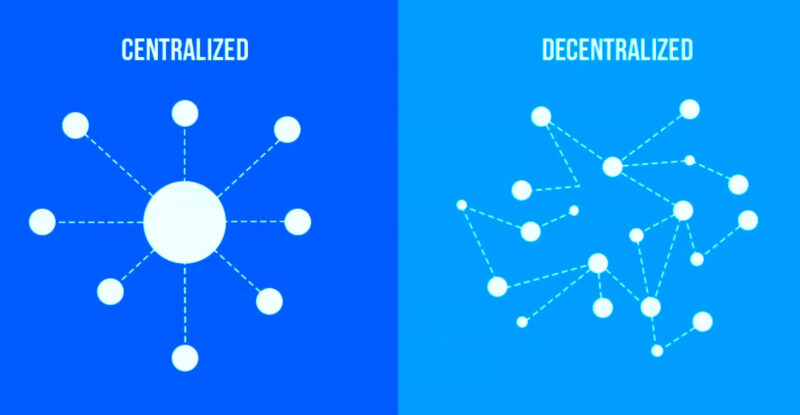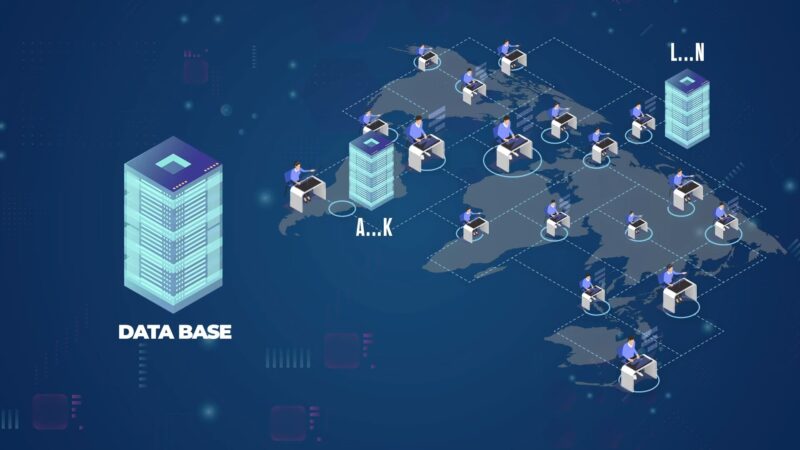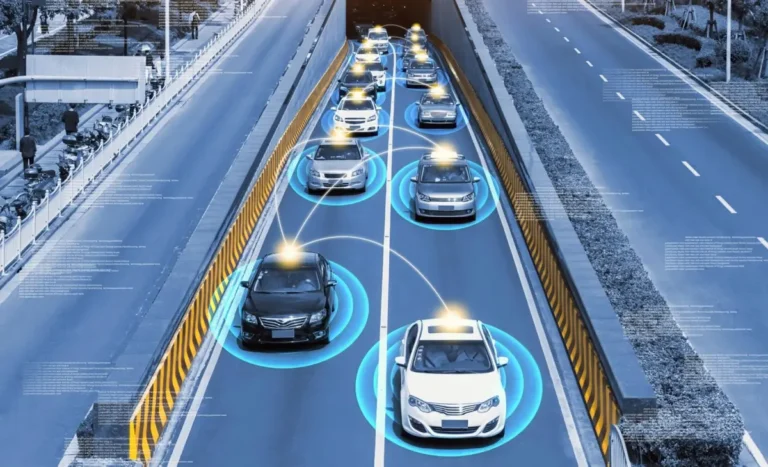In the old days of mainframe-driven computing, there weren’t many options available when it came to building a network. For today’s organizations, however, there are a number of choices to consider, allowing them to construct a network that meets their unique business needs.
One of the most important considerations, however, is whether they want to use a centralized or a decentralized network.
What is the Difference Between a Centralized and a Decentralized Network?

The primary difference between centralized and decentralized communication networks has to do with the question of who has control over the network itself. In a centralized system, a singular authority or administrator retains total control over all aspects of the network.
This authority is typically exerted through a central server that manages all data and permissions. A centralized network also locates all major processing power in this primary server.
Decentralized networks are organized in a much more distributed fashion. Each node within the network functions as a separate authority with independent decision-making power regarding how it interacts with other systems.
These networks also distribute processing power and workload functions among connected servers.
How Does a Centralized Computer Network Work?
Since they provide more direct control and are generally easier to set up and manage, many organizations continue to deploy centralized processing architecture. These networks are based around a central server that manages the processing, storage, and permissions functions available to users.
Centralized computer servers tend to be incredibly powerful devices, able to accommodate a large volume of requests from connected systems while also managing who has access to those resources when they can access them, and under what conditions. Efficiency is the primary advantage of this type of network architecture.
Since all key network functions are managed through a central location, IT personnel can focus on keeping those servers up-to-date in terms of hardware upgrades and software patches. Centralized architecture also makes it easier to provide a consistent user experience because the network environment is stable and predictable.
Also, since all connections must go through the main server, requests and data packets generally follow a shorter path to their destination, which can improve speed and performance. On the downside, however, centralized networks are not very fault-tolerant.
All data must pass through a single location, so if that central server goes down for any reason, it will likely take the entire system down with it. This makes centralized architecture a tempting target for cyberattacks because a breach could potentially compromise all of the data and applications stored there.
While centralization can potentially improve efficiency, it can also lead to a massive slowdown if the network doesn’t have sufficient bandwidth to handle user activity.
How Does a Decentralized Network Work?
As the processing power of individual devices distributed throughout networks has increased, decentralized architecture has become more appealing. While there are different degrees of decentralization, the basic principle involves multiple independent machines that are connected and provide a pool of resources.
Since each node within the network retains independent control, every one of them can set its own rules regarding data and workload availability. Managing this complex web of computing resources can be difficult, but decentralized architecture has made it possible for organizations to utilize edge computing and deploy a multitude of Internet of Things (IoT) devices in new and exciting ways.
Scaling a network is also easier because simply adding another device can increase the available decentralized computing resources. Another key advantage of decentralized networks is system reliability.
Since each node within the network functions as an independent system contributing to a pool of computing resources, there is no single point of failure or vulnerability. If one component goes down or is hacked, the rest of the network will not be compromised and will remain operational.
In order for a hostile actor to bring the system down, they would have to target and capture multiple independent systems, each one with its own security controls and data. Even if a cyberattack did breach a single system, there is no guarantee that it would contain the valuable data the attackers are hoping to find and exploit.
Unfortunately, the complex and dynamic nature of decentralized architecture makes it extremely difficult to build and manage. Rather than focusing on one primary server or cluster of servers, decentralized networks require multiple machines that must be kept updated and patched to meet the latest functionality and security requirements.
These machines may also be less efficient in terms of power consumption and latency. Data must sometimes travel complicated routes from one machine to another, which means it will take longer for requests to be resolved.
Centralization, Decentralization, and Cloud Computing
The widespread adoption of cloud computing has had a tremendous impact on both centralized and decentralized networks. In some ways, the cloud is the ultimate centralized processing network.
Cloud providers allow users to access the applications and computing power of their servers while also retaining complete control over those resources. At the same time, the connectivity of the cloud makes it possible to design decentralized networks that incorporate edge computing strategies and IoT devices that can function autonomously while still transmitting data to other systems.
Centralized vs Decentralized Computing: Which One Do You Need?

As with many IT architecture questions, business needs are the primary consideration when making a choice between a centralized and decentralized network. If an organization needs an easy-to-manage system that allows it to exert a great deal of control over workloads and user access, a centralized network makes the most sense.
Decentralized architecture may be more difficult to implement and maintain, but it offers advantages in terms of redundancy and security. Both types of networks come with their own performance issues to manage.
Centralized processing networks must have sufficient capacity to avoid bandwidth bottlenecks, while decentralized networks must be optimized to combat latency. Organizations must also take into consideration their future scalability plans and design a network that will be able to grow with them over time.
Colocation data centers can easily facilitate both types of networks. Their ability to provide efficient power, cooling, data center storage, and connectivity makes them an ideal location for centrally-located servers.
On the other hand, those same connectivity options can be combined with a multi-datacenter strategy to create a decentralized network that utilizes edge data centers and allows organizations to keep key processing functions at the edge of their networks where data is gathered. Whichever type of network an organization chooses to build, finding a versatile, carrier-neutral colocation partner is a good first step toward success.
FAQ
Can a network be both centralized and decentralized?
Hybrid models do exist, where certain components or functions of a network are centralized, while others are decentralized. This approach aims to leverage the strengths of both architectures.
What is a node in the context of decentralized networks?
A node refers to an individual device or system within a decentralized network. Each node operates independently and has its own decision-making authority regarding its interactions with other systems.
How does centralization affect data security?
Centralized networks have a single point of vulnerability, meaning if the central server is compromised, all data and applications within that server are at risk. However, centralized systems can also have robust security measures in place, given that there’s a singular point to fortify.
Are decentralized networks always better than centralized ones?
Not necessarily. The choice between centralized and decentralized networks depends on the specific needs and goals of an organization. Each has its own advantages and disadvantages.
How do blockchain networks relate to decentralization?
Blockchain is a type of decentralized network where data is stored across multiple nodes in a chain of blocks. It’s known for its security and transparency features.
Final Words
The choice between centralized and decentralized networks is not black and white. It’s essential for organizations to assess their specific needs, the nature of their operations, and their long-term goals before making a decision.
As technology continues to evolve, the lines between these two architectures might blur, offering even more tailored solutions for businesses.








